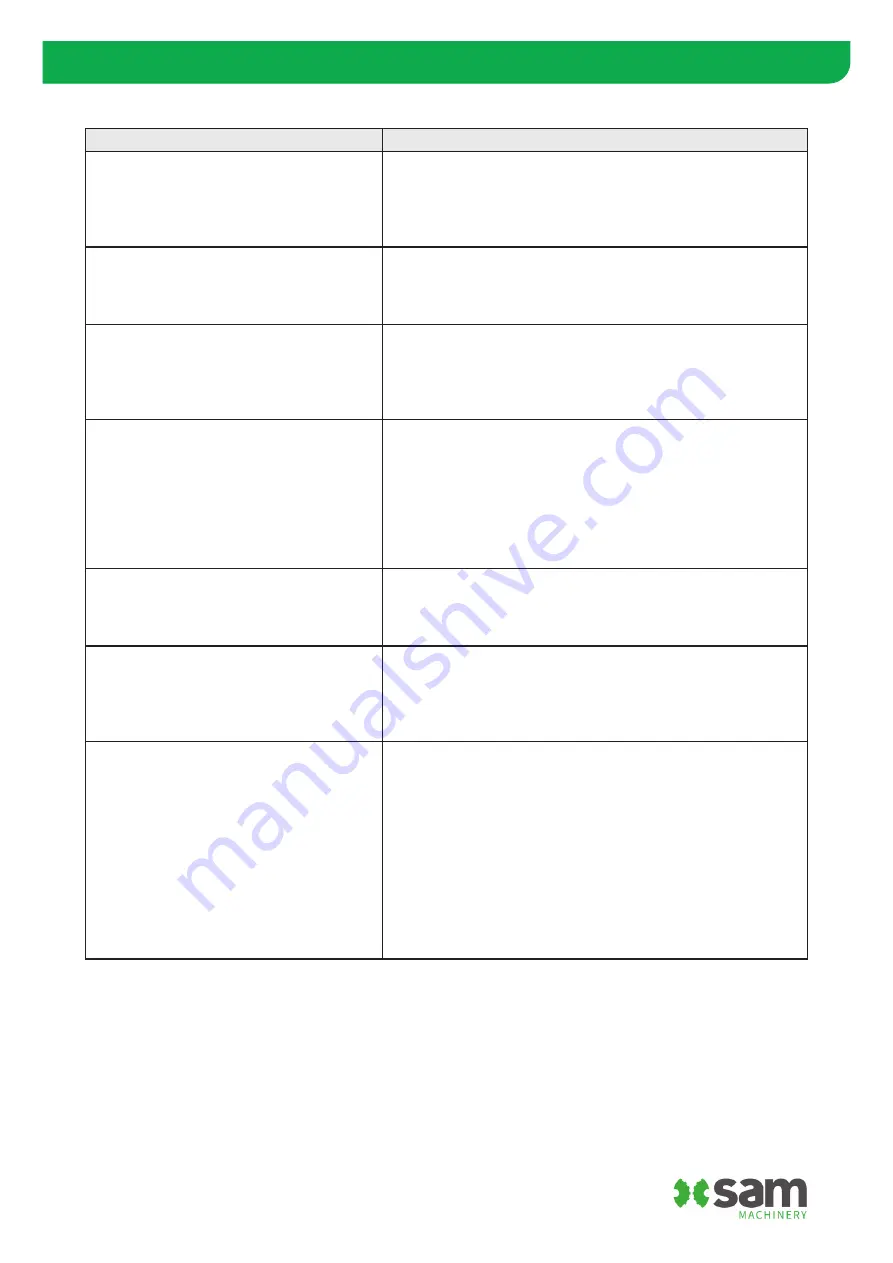
P13
TROUBLESHOOTING
QUESTION / PROBLEM
SOLUTION
What hydraulic oil flow is required?
Standard SAM Fertiliser Spreaders are fitted with two OMP50
hydraulic motors running in series, requiring an external oil flow
of 50 litres/minute.
What RPM should the spinner shaft turn at?
The spinner shaft should turn at approx. 850RPM at
50 litres/minute at 2000psi.
What direction do the spinner discs turn in?
When standing at the back of the machine, the right-hand spinner
disc should turn clockwise and the left-hand
spinner disc anti-clockwise.
How do I prevent fertiliser product falling
out the sides and/or front of the spreader bin
(e.g. striping)?
The side-skirts (running the length of the machine, inside the
plastic bin) and front/rear bin scrapers will require regular
adjustment, particularly when the machine is new. Both the side-
skirts and front/rear bin scrapers are bolted (slotted holes) onto
the machine - these bolts can be simply loosened and the skirt or
scraper maneuvered to be flush with the floor-belt.
What tension should be on the floor-belt and
chain assembly?
The floor-belt should be tensioned with a 40mm sag below the
middle of the chassis, with an even curve/sag from front to back.
What are the minimum and maximum appli-
cation rates for various fertiliser products?
From 45kg/hectare at 15m spreading centres for Urea (and similar
products), and up to 3,000kg/
hectare at 10m spreading centres for Lime.
How accurate is the spread pattern?
Representative machines have been tested using the
nationally recognised Spreadmark test for accuracy. Spread
patterns are rated using Coefficient of Variation (CV), a
measure of the percentage of fertiliser outside a perfect spread -
0% being a perfect spread pattern.
Standards recognise a CV under 15% as acceptable for nitrogenous
fertilisers (DAP, Urea, Nitroposka Blue etc.). SAM Fertiliser
Spreaders have achieved a 7.1% CV for Urea and 8.1% CV for
Superphosphate - well within industry standards.
TROUBLESHOOTING

































